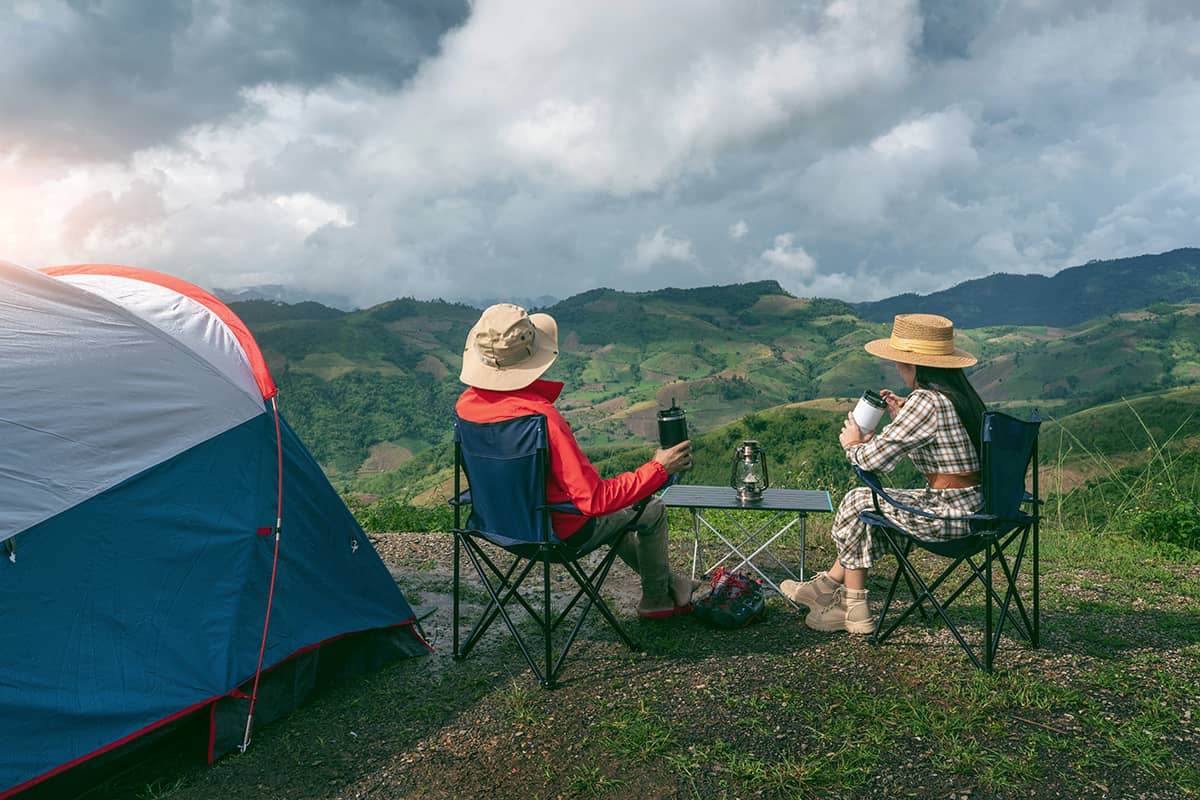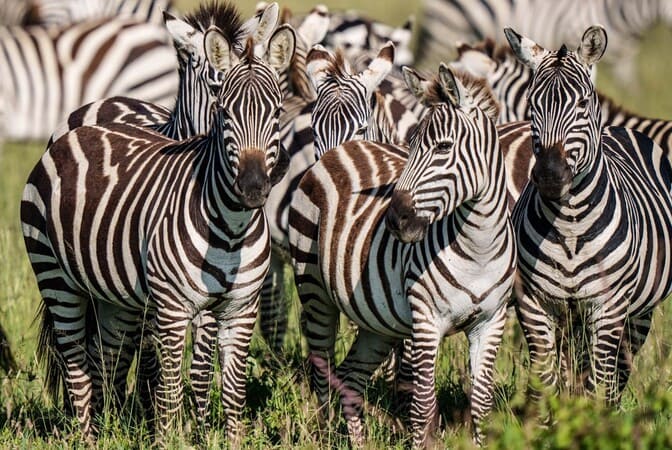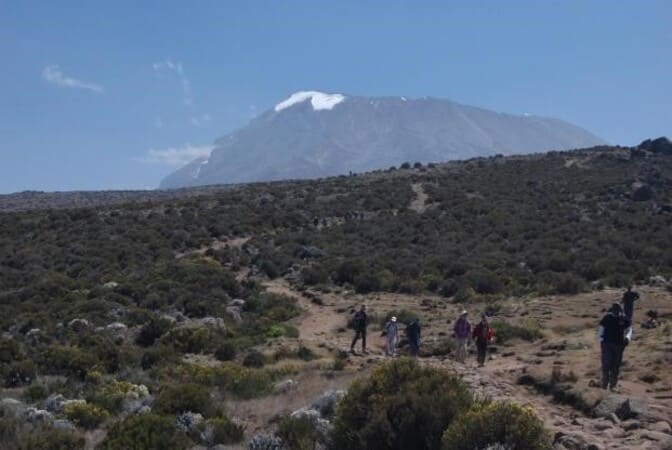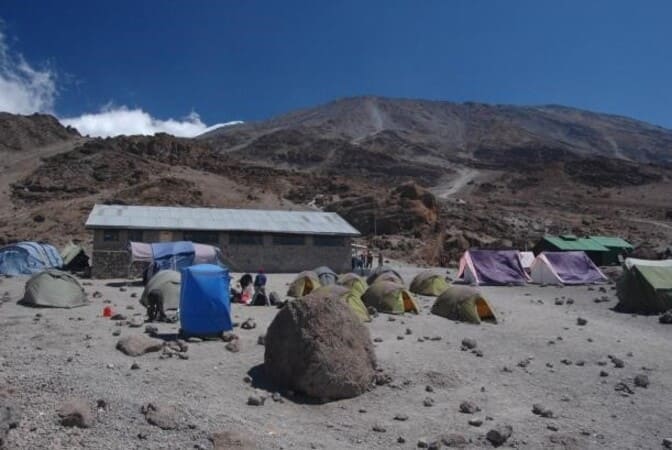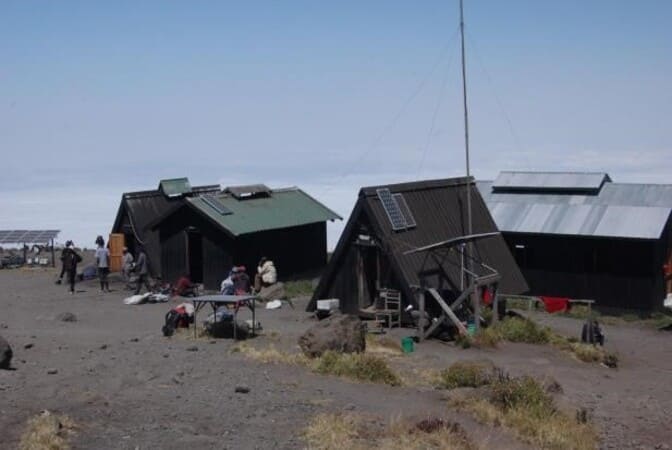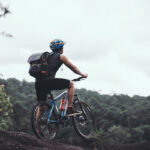12 Days
Duration
Tanzania
Location
12 Days Kenya Tanzania Safari Maasai Mara Mt.Kilimanjaro Marangu
Discover the breathtaking landscapes, diverse wildlife, and rich cultures of East Africa on an extraordinary Kenya-Tanzania tour safari. Embark on a journey of a lifetime as we guide you through the enchanting wilderness and vibrant local communities of these two captivating nations.
On arrival at Jomo Kenyatta International Airport, you will be transferred to Eka Hotel in Nairobi, where you will spend the night on a bed & breakfast basis.
Meals: BB.
Accommodation: Eka hotel.
After an early breakfast leave Nairobi for Masai Mara game reserve arriving in time for lunch at Mara Ash nill camp. The Masai Mara offers wildlife in such variety and abundance that it is difficult to believe; quite a great number of animals have been recorded here. You will easily see lions, rhinos, hippos, crocodiles, giraffes, wildebeests, zebras, buffalos, warthogs, hyenas, jackals, leopards, and many antelopes and elephants. It is in the Masai Mara that perhaps the most spectacular event of the natural world takes place.
This is the annual migration of wildebeests and zebras from the Serengeti (Tanzania) in search of water and pasture. Following on their heels are the predators of the savannah – lion, cheetah, wild dog, hyena, and vultures. The Maasai people who dwell in the Masai Mara and its environs are strongly autonomous people who still practice customs and rituals as a valuable part of their lives. They view themselves not just as dwellers of this area but as much part of the existence of the land as the land part of their existence. Customarily, the Maasai scarcely hunt since dwelling together with animals in tranquillity is an integral part of their belief. Lions and wildebeests have an essential role in their cultural belief as their own herds of livestock. An afternoon game drive will be offered on this first day.
On this day you will go for a full-day game drive with your packed lunch which will be taken in the wild. At 4.30 p.m. return to your lodge for dinner and overnight. Accommodation: Ashnil Camp FB.
After breakfast leave the Mara for Lake Naivasha, this day you can opt to go for a boat ride (optional) at the lake or rest. Accommodation: Lake Naivasha Country Lodge.
Leaving Lake Naivasha behind you and continue towards Nairobi and then head South East to Amboseli where you will arrive in time for lunch at Amboseli Serena Lodge. In the afternoon you will go for a game drive in the park, returning to the lodge at sunset for dinner and overnight.
Accommodation: Amboseli Serena Lodge FB.
Enjoy a morning game drive in Amboseli, returning to the lodge for breakfast, and thereafter head to the Kenya-Tanzania border where you will be picked by our partners for your Mt. Kilimanjaro climbing.
Mount Kilimanjaro Climb
A journey to this great Mountain is not merely a climb it’s an exploration. For some the appeal is simple, it is the highest summit on earth that is accessible to any committed walker without technical skills and experience. A mere city-dweller may be able to reach `the roof of Africa`. This is the allure of the highest free-standing mountain in the world. However, each walker faces a personal gamble, and the stakes are high; altitude symptoms are unpredictable. Preparation can guarantee success, reaching the summit is not the only goal, success lies rather in the quality of the attempt. The natural world of this mountain is fascinating. In a landscape formed by ice and fire, the ascent takes you from tropical rainforest to arctic conditions among the summit glaciers. Best time of the year; December to late March, late June to October.
Enjoy a morning game drive in Amboseli, returning to the lodge for breakfast, and thereafter head to the Kenya-Tanzania border where you will be picked by our partners for your Mt. Kilimanjaro climbing.
Mount Kilimanjaro Climb
A journey to this great Mountain is not merely a climb it’s an exploration. For some the appeal is simple, it is the highest summit on earth that is accessible to any committed walker without technical skills and experience. A mere city-dweller may be able to reach `the roof of Africa`. This is the allure of the highest free-standing mountain in the world. However, each walker faces a personal gamble, and the stakes are high; altitude symptoms are unpredictable. Preparation can guarantee success, reaching the summit is not the only goal, success lies rather in the quality of the attempt. The natural world of this mountain is fascinating. In a landscape formed by ice and fire, the ascent takes you from tropical rainforest to arctic conditions among the summit glaciers. Best time of the year; December to late March, late June to October.
Food and drinks.
Meals are provided by our support staff, and despite the difficult conditions for preparation and cooking, most people find the food palatable and plentiful. The diet is rich in carbohydrates, good for helping to overcome altitude systems. Bring some snacks and treats such as dried fruits, and trail mix power bars. They will boost your energy and morale; the snacks help to bridge gaps between meals. Also, bring some throat sweets or peppermints as many people suffer from dry throats at altitude.
Accommodation Huts
Marangu Route is the original and the best. It is one of the best-known routes, also the only one you sleep overnight in bunked-bedded huts with solar-powered electricity. Nearby toilets blocks have running water. Most huts sleep up to six people, except Kibo Hut which has 60 beds in five dormitories. People of either sex are allocated to bunks on arrival.
Parking Checklist/ Essentials
- Walking boots and spare trainers or hut slippers.
- Warm clothing, socks, warm hat, warm gloves and their liners.
- Waterproof jackets/trousers
- Sleeping bag rated -15 to – 25 degrees Celsius.
- Head torch and spare batteries.
- Camera and spare batteries.
- Snacks and throat sweets.
- First aid kit
- Sun protection factor
- Enough money for tips.
Advance Planning Checklist
- Consult a medical doctor about your proposed trip.
- Suitable Travel insurance.
- Plan and execute training programs for fitness and stamina.
- A strong waterproof kit bag or rucksack.
- Trial packing and check the target weight of 15kg min, max 17kg (Normal for the porter)
- Prepare a day pack to carry your essentials.
The Marangu route is one of the most popular routes to the summit of Kilimanjaro. This could partly be a result of the fact that the Marangu is the least expensive route, but more so, perhaps the fact that it is possible to do the Marangu route in 5 days, thereby getting to the summit one day earlier compared to the Machame route. This is not always the best way, due to a shorter acclimatization period.
The Marangu route does however offer you the option of spending an extra acclimatization day on the mountain. This extends the route into a 6-day trek, greatly increasing your chances of success. Shared hut accommodation on the Marangu route forms one of the main differences, compared to the other routes. It offers you the relative luxury of being able to sleep in huts along the entire route. Mineral water, soft drinks, chocolates, and beers are also sold at all the camps on this route. All your equipment and supplies are pottered and a cook prepares all your meals.
The main itinerary difference between the Marangu 5-day and 6-day routes is the additional acclimatization day at Horombo Hut.
Hiking time: 5h
Distance: Approximately 8.1 km
Habitat: Montane forest
The drive from Moshi to the Kilimanjaro National Park gate takes about 1 hour and 20 minutes. The journey passes through the village of Marangu, which is located on the lower slopes of the mountain. Once you reach the park gate, all hikers are requested to sign in at the Park office and make their final preparations for the climb. Porters will be seen arranging and loading their packs, containing the food, water, cooking gas as well as most of your equipment. Make sure that you have all your daypack items (containing at least drinking water, your lunch pack, and extra clothing) with you, as the porters ascend a lot quicker than the hikers.
Our guides will be available to assist with any additional information or needs you might have. You now leave the Park gate and ascend on a cleared ridge trail through the rainforest. The forest, suffused with mist and dripping with beards of moss, is also where most of Kilimanjaro’s animals are found.
An alternative and more scenic parallel forest trail branches off to the left a few minutes after the gate. This trail follows the edge of a stream through the undergrowth and offers you the option to re-join the main trail either after 1.5 hours hiking, or 1 hour before Mandara hut.
Your first night stop is at Mandara hut, consisting of a group of wooden A-framed huts in a forest clearing. Each hut features 6-8 sleeping bunks with solar-generated lighting. The total capacity of the camp is 60 climbers. Water is piped into the camp from springs above and there are flush toilets behind the main hut. Dinner is prepared by our cook and served in a communal dining mess.
Hiking time: 6h
Distance: Approximately 11.6 km
Habitat: Moorland
From Mandara hut the trail passes through a short stretch of forest, skirts the base of the Maundi Crater and then emerges into the transition from rainforest to moorland. It is well worth a short detour to scramble up the rim of the Maundi Crater for your first really impressive view of the Kibo Crater. On a clear day, Kibo will glimmer in the distance, showing off her majestic glaciers in the morning sun.
Once you are in the open moorland you will get the chance to see some of Kilimanjaro’s most spectacular plants – the endemic giant lobelia which grows up to 3 m in height and the giant groundsel (Senecia Kilimanjaro), which can reach heights of 5m! After about 6 hour's trek from here, you reach the Horombo hut, where you will have a hot bowl of washing water, rest; an evening meal, and overnight.
Horombo hut is a village of huts perched on a small plateau, with buildings similar to Mandara, but with a total capacity of 120 climbers! Horombo is normally bustling with hikers, guides, and porters, with an atmosphere of adventure and excitement. You will meet both ascending and descending hikers here.
This extra day and night at Horombo are for additional acclimatization. A hike towards the Mawenzi hut, passing the Zebra Rocks on the way (about 3 hours up and 1,5 hours down), is strongly recommended. This hike will further assist with the process of acclimatization.
Remember to drink enough water and move slowly! All meals for the day are provided at the hut. Retire to bed early and get a last good night’s rest.
Hiking time: 6h
Distance: Approximately 9.6 km
Habitat: Alpine desert.
After breakfast, you now continue your ascent into the Alpine desert habitat. From Horombo there are two trails to the “Saddle” (which refers to the area located between the peaks of Mawenzi and Kibo). There is an upper route (right-hand fork) and a lower route (left-hand fork) to choose from. The upper route (right-hand fork) should be very familiar, as you will have climbed most of it the previous day (on your acclimatization hike) towards Mawenzi hut. This section is very stony and eroded.
The recommended lower route (left-hand fork) is much easier and nearly an hour shorter and it also passes the last watering point at 4130m. You will have to fill your water bottles with all the water you will need until your return to Horombo hut in two nights’ time (unless you are willing to buy Mineral water at Kibo hut). Once again remember to slow down and drink enough water! Situated in the barren Alpine desert is Kibo hut, a stone build block house that has bunk beds for 60 climbers, but no streams with water nearby. It is however possible to buy mineral water and soft drinks at the camp office. There are platform toilets behind the hut.
The summit is now a further 1195m up and you will make your final ascent the same night. Prepare your equipment, ski stick, and thermal clothing for your summit bid. This should include the replacement of your headlamp and camera batteries and make sure you have a spare set available as well. To prevent freezing it will be wise to carry your water in a thermal flask. Go to bed at round 19h00 and try to get as much rest and sleep as possible.
Hiking time: 7 to 8 hours to reach Uhuru Peak, 6 to 8 hours to descend to Horombo
Distance: Approximately 5.4km ascent and 15 km descent
Habitat: Stone scree and ice-capped summit.
You will rise around 23h20, and after some tea and biscuits you shuffle off into the night, and this is where the going really gets tough. The first section of the trail consists of a rocky path to the Hans Meyer Cave (5150m), also a good resting spot. The path then zigzags up to Gillman’s point (5 681m), which is located on the crater rim. This section is very steep with a lot of stone scree, requiring a great physical and mental effort. This is probably the most demanding section of the entire route. Do the Kili shuffle and move slowly.
From Gillman’s Point, you will normally encounter snow all the way up to Uhuru Peak (5895m), the highest point in Africa. Total exhilaration and satisfaction – you made it. Weather conditions on the summit will determine how long you will be able to spend, taking photographs, before the 3-hour descent back to Kibo hut. After a short rest, you gather all the gear you left behind for the ascent and head down to Horombo hut (3 hours) for your overnight. The return to Horombo hut will seem surprisingly fast compared to the ascent. The total time spent walking on this day is around 14 hours, so be prepared for a very tough day. Later in the evening, you enjoy your last dinner (with soft drinks and beer for sale at the camp office) on the mountain and a well-earned sleep, filled with memories and stirring emotions.
Hiking time: 6h
Distance: Approximately 19.7 km
After breakfast you continue your descent (6 hours), passing the Mandara hut, down to the Marangu gate. At Marangu gate you sign your name and details in a register. This is also where successful climbers receive their summit certificates. Those climbers who reached Gillman’s Point (5685m) are issued with green certificates and those who reached Uhuru Peak (5895m), receive gold certificates. You now drive back to ARUSHA/MOSHI for lunch and then to the border where you will be picked up by our team and transferred back to Nairobi for bed and breakfast.
This Day you can visit the City Center waiting for your outward-bound flight.

